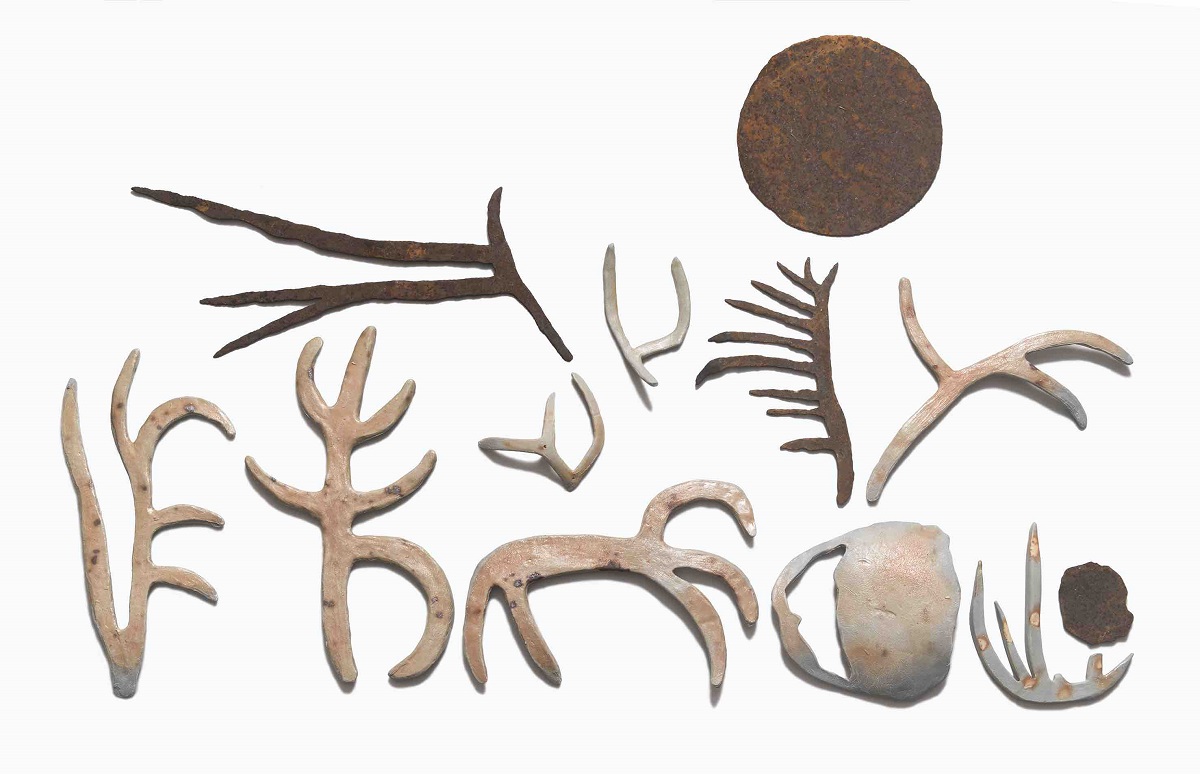
Visual Arts / Glyphs –The Poet’s Garden, GW Bot. At Beaver Galleries, until February 24. Reviewed by KERRY-ANNE COUSINS.
GW Bot is a well-known artist based in Canberra.
During the course of a long and committed career in the visual arts she has found her own unique way of transcribing the world around her – a world that has at its aesthetic, spiritual and philosophical centre the living world of nature.
To make sense of it and to be able to transcribe her deep personal and spiritual experience, the artist has created a persona of the self as poet and philosopher revealed by an iconography that transcends any limitations posed by subject and media.
The mark making in the artist’s work is not only derived from the process of cutting into a surface characteristic of the process of linocuts but also from a response to the marks and patterns seen in nature.
The marks the artist makes can be rhythmic and regular as in the linocut, Sand Glyphs, or more random as in the work, Jacobs Ladder, where the curving irregular rhythms dance across its surface.
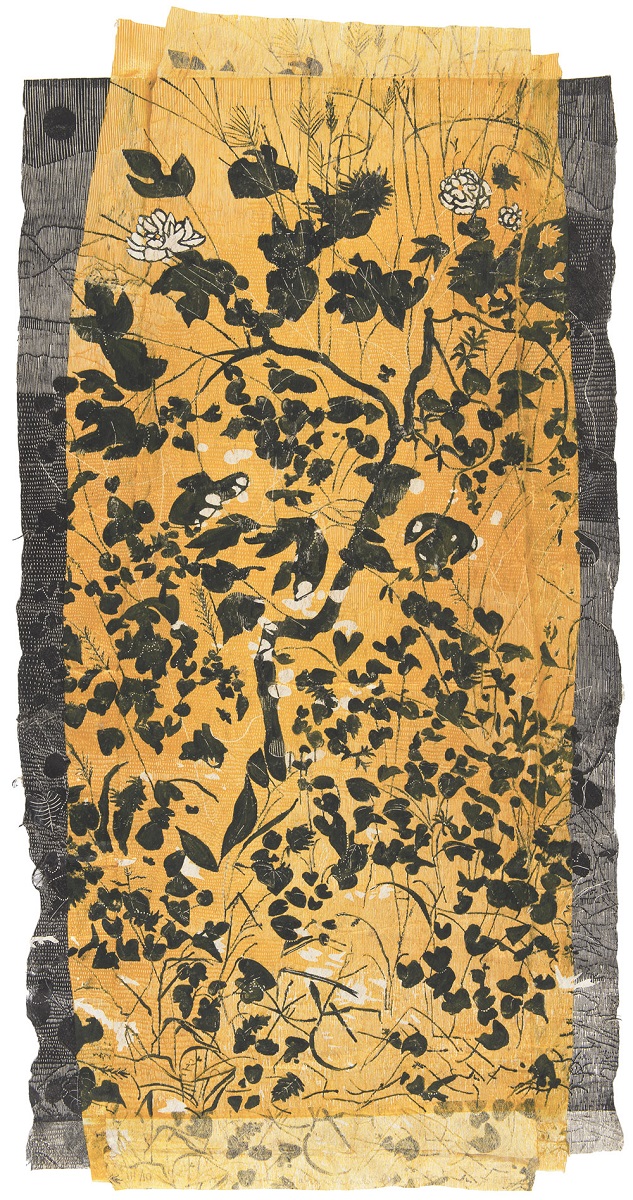
Tapa cloth, the paper used for these works, has its origin in the Pacific islands. It is made by soaking and beating smooth the bark of certain trees.
Tapa’s characteristic irregularities are used by GW Bot to enhance the textures of her surfaces so that the images and background become integrated. This is exemplified in the dramatic linocut Let the Earth Bring Forth Grass. This blending of image and background through the subtle use of the various natural irregularities in the texture of the tapa cloth makes the work very tactile.
The long stringy thread of grass seems almost to be growing into the body of the work itself. It reinforces our relationship with the tactile aspect of nature and the need to touch and feel the world we inhabit.
The glyph, a pictorial language developed by the artist is integral to her art. The work Ghost Gum Glyphs is a good example of the relationship between nature and the glyphs used by the artist. The curling branches of the ghost gum suggests a strong visual link between forms in nature and the shapes of the glyphs.
Over time the artist’s use of these glyphs has changed from their inclusion in two dimensional works on paper as in the linocut The Season of Glyphs to include sculptural forms in metal, ceramic and steel. This is exemplified in the wall sculpture Paleoglyphs, where the forms of the glyphs are made in ceramics and steel.
In the linocut called The Tree of Life also in the Midst of the Garden (in a black and white, and yellow version), the densely constructed patterns of flowers and leaves present a fecund vision of a garden as a safe refuge and nurturing space.
GW Bot as a philosopher/poet tends this metaphorical garden – a medieval hortus conclusus (or enclosed garden) offering a place of spiritual growth. In the stark work drawn in graphite, Christ Recrucified, we leave this comforting place of refuge for a vision of nature that has been made arid and bare-ruined by the ravages of humankind.
As the artist writes: “Gardening is an act of optimism and the loss of a garden is a loss of hope.”
The body of work in this exhibition is a paean to hope – from a wise gardener, the artist, who has learnt to tend well her spiritual and philosophical garden.
Who can be trusted?
In a world of spin and confusion, there’s never been a more important time to support independent journalism in Canberra.
If you trust our work online and want to enforce the power of independent voices, I invite you to make a small contribution.
Every dollar of support is invested back into our journalism to help keep citynews.com.au strong and free.
Thank you,
Ian Meikle, editor
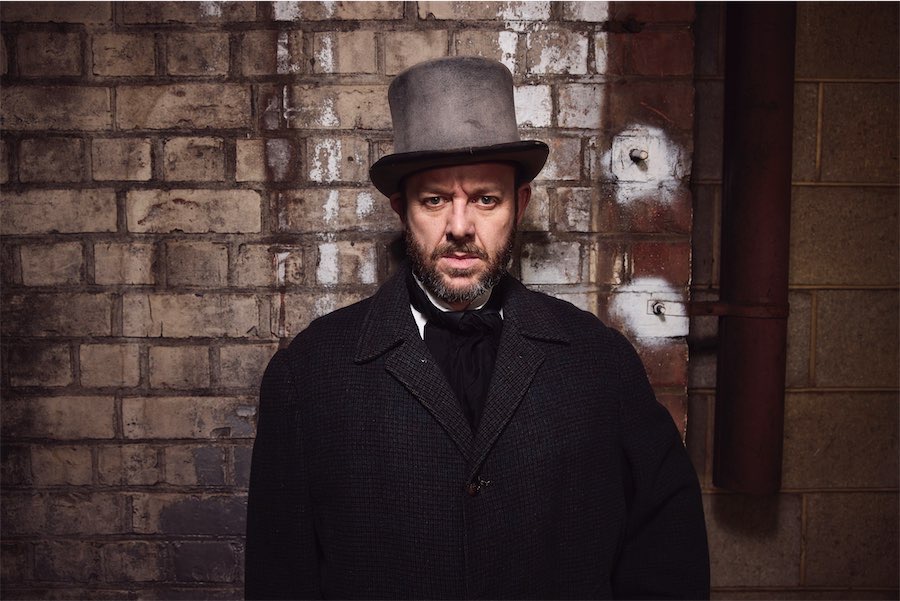
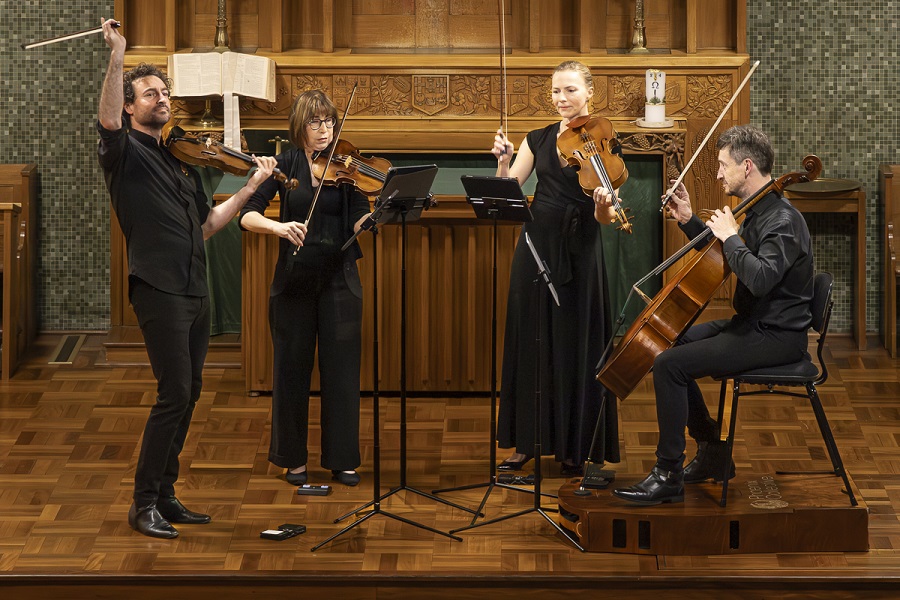
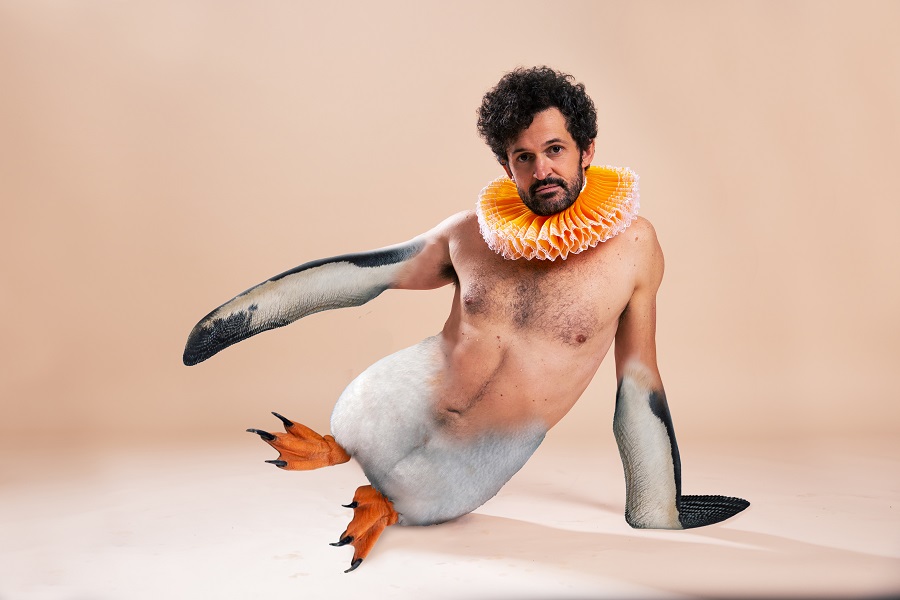

Leave a Reply